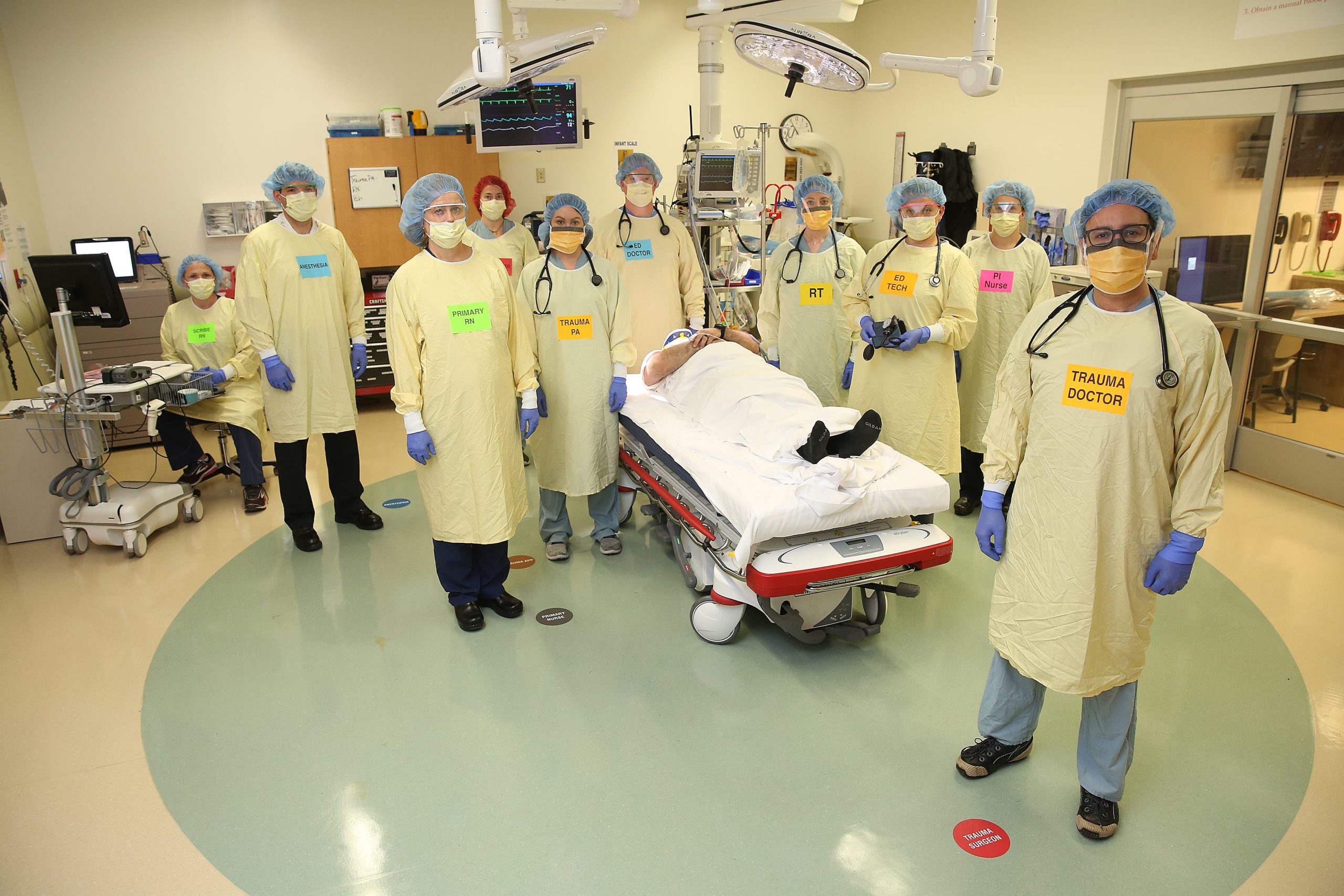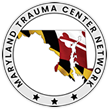Have you ever wondered who is involved in a trauma activation at a trauma center?
In this blog, we will breakdown the roles and responsibilities of the trauma health care team.
Refers to the physician who is ultimately responsible for a patient’s care. Attendings have final responsibility for patient care.
A professional who serves as a point of contact for individuals with disabilities and family members.
- Coordinate the process of assessment, planning, facilitation, and advocacy.
- Consult with key providers to ensure that the health care plan is developed. appropriately and monitored for effectiveness.
- Provide referrals to appropriate community resources.
- Monitor patients progress toward discharge.
- Advocate for the patient.
- Identify a cost-effective comprehensive plan.
A member of the clergy serving a group of people, clinically trained health care professionals and are certified by the national pastoral care organization.
- Provide spiritual and emotional support to patients, families, and staff.
Educated and clinically trained in the developmental impact of illness and injury.
- Help to improve patient and family care, satisfaction, and overall experience.
- Explain the procedure, visit, surgery, etc., using non-medical terminology and ensure that the patient is comfortable.
A healthcare personnel that examines and analyzes blood and other body fluids.
- Looking for bacteria, parasites, and other microorganisms.
- Analyzing chemical contents.
- Matching blood for transfusions.
- Testing for drugs in a patient’s blood.
A trained professional who applies mental health, psychological, and human development principles to address wellness, personal growth, career development, and pathology. They are defined by their specialization. Counselors may engage with patient in modes of therapy – individual, group, or family.
An expert in food and nutrition, promoting good health and prevent and treat illnesses by recommending healthy eating habits and dietary modifications.
An emergency responder trained to provide emergency medical services to critically ill and injured.
The goal of EMT intervention is to
- Rapidly evaluate a patient’s condition (including airway, breathing, circulation, defibrillation, controlling eternal bleeding, prevent shock and further injury)
- Transport patient to hospital via ambulance (or helicopter).
Term used for physicians who have completed 3+ years of residency and have chosen to pursue subspecialty training.
Goal of most fellowships is to produce academic and clinical leaders and involve physicians in patient care, research, and education.
Term used for a physician in training who has completed medical school but cannot practice without supervision.
Medical internship gives in-depth training with a specific branch of medicine.
Term used for a physician in training who has completed medical school.
They do not have a full license to practice medicine unsupervised.
Medical residency gives in-depth training with a specific branch of medicine.
A healthcare professional who assists individuals, families, and communities in attaining and maintaining optimal health and functioning.
Responsible for treatment, safety, and recovery of ill or injured people.
Trained in diagnosis and management of common medical conditions.
- Order, perform, and interpret diagnostic studies.
- Prescribe medications and PT.
- Consult and educate patients on health behaviors and treatment options.
The aim of OT is to help the client perform daily tasks in their living and working environments and to assist them in developing the skills to live independently.
Provide direct patient care, including recording vital signs/height/weight, collecting test specimens, bathing, dressing, grooming, assisting with mobility and feeding.
- Distribute drugs prescribed by health care providers.
- Monitor health and progress of patients in response to drug therapy.
- Advise health care providers on selection, dosages, interactions, and side effects.
Diagnose and treat patients who have medical conditions that limit their abilities to move and perform functional activities in their daily lives.
Also help to prevent conditions associated with loss of mobility.
Highly trained mental health professional whom specializes in human behavior, assessment, diagnosis, treatment and behavior change. They strive to create a supportive environment and are qualified to provide psychological and neuropsychological assessment.
- Produces x-ray films of parts of the human body for use in diagnosing medical problems and helping to treat illness and injury.
- Explain the exam to the patient, get them ready, and then perform the exam.
Specialize in the assessment and treatment of breathing disorders. RTs are specialists in airway management, mechanical ventilation, and critical care medicine.
Helps individuals function the best way they can in their environment, deal with their relationships, and solve personal/family problems.
Assess, diagnose, treat, and help to prevent speech, language, swallowing, and other related disorders.
a medical specialist who treats diseases or injuries by performing an operation.
References:
https://www.traumasurvivorsnetwork.org/traumapedias/470https://www.childlife.org/the-child-life-profession
Blog Post Submitted by:
Creason Walter
TraumaNet Communications Chair


